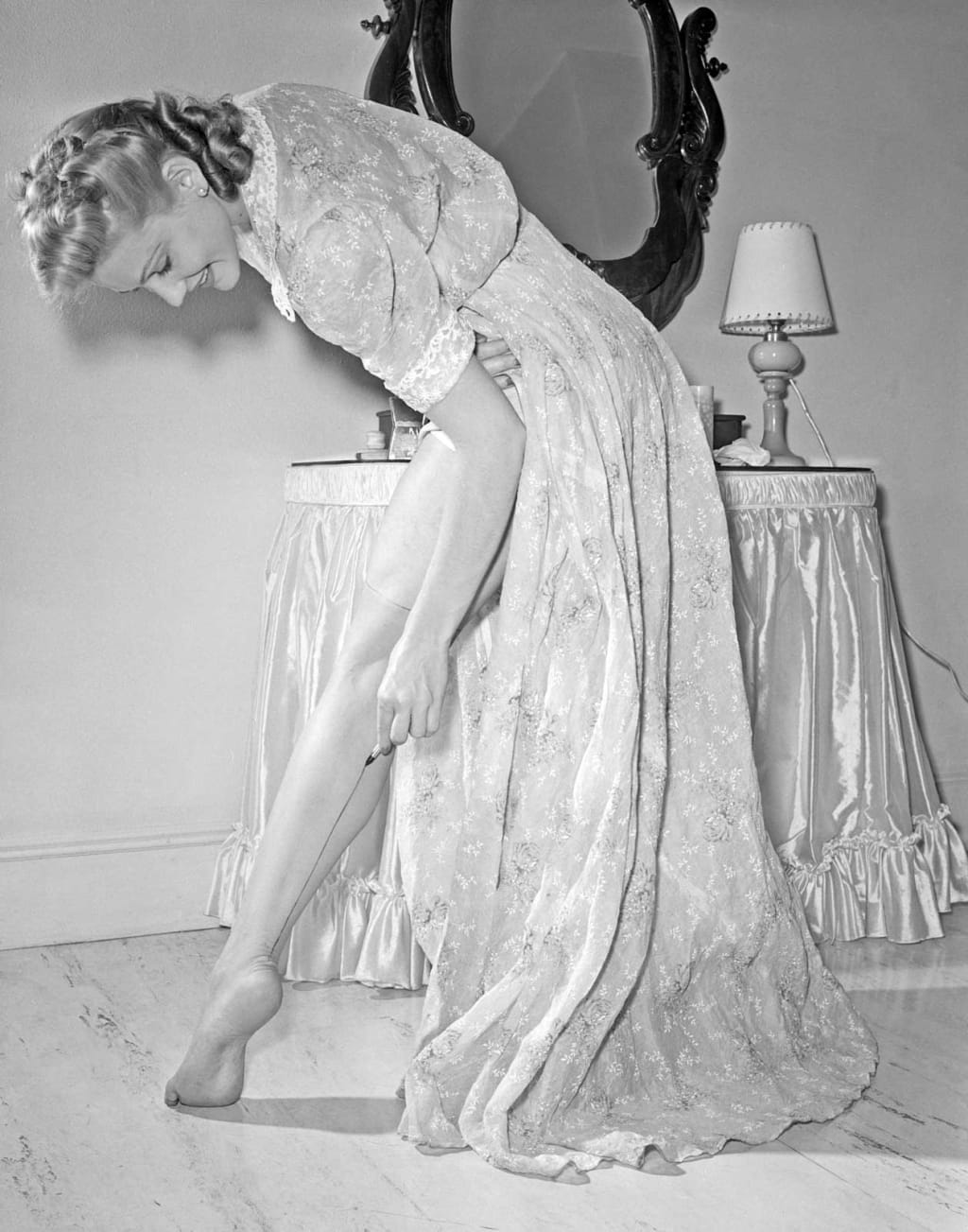
World War II is thought of as one of the most violent and deadly times in human history, and rightly so. It was a time of genocide, mass murder, and complete devastation. War time changed every element of everyday life around the world. In America, it drove women into the work place, limited industry production across the board, and forced rationing of goods for everyone. This rationing led to many changes in women’s fashion, and though a seemingly trivial detail of the time, these adjustments created a domino effect that is felt even up today. Hems were shortened, fabrics changed, skirts and dresses were replaced by shorts and pants, and nylon stockings were replaced with…
…Gravy and eyeliner?
Such a trivial item to stir up the chaos that it did at this time in American history, but war time limitations met with post war stress and anxiety made the Nylon stockings a commodity worth rioting over.
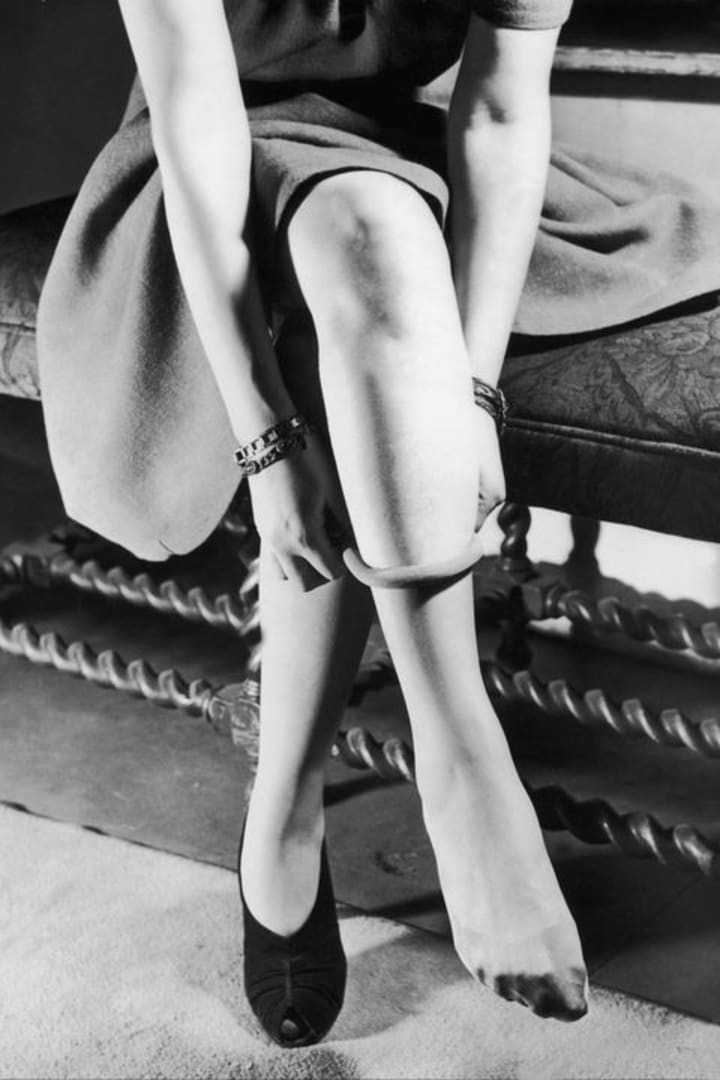
Nylon fabric is a polymer synthetic material made from water, air and coal. It’s an elastic material with a smooth hand and incredibly strong fibers. The fabric is easy to wash and famously retains its shape no matter how much it is stretched. Created by American Chemist Dr. Wallace Carothers for the (rather controversial) company DuPont, the material was first used as the bristles of a toothbrush due to its strength and ability to retain its shape. Seeing the opportunity, the leaders of the DuPont company decided to use the fabric to replace costly silk, providing a stronger, cheaper alternative for everyday items, more specifically, women’s stockings. Replacing silk stockings with Nylon stockings made the everyday item more affordable and more accessible for women across the class system. They were introduced at the New York World’s Fair in 1939 and by 1940 they were commercially sold, selling close to 5 million pairs on the first day of mass release.
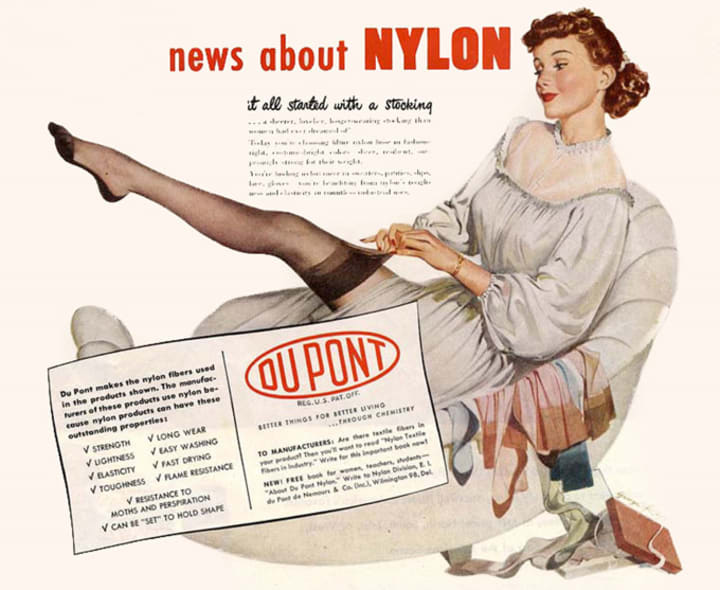
Stronger, less prone to runs than cotton or rayon, and generally longer lasting than their silk counterpart, Nylon stockings immediately became a staple item in every woman’s wardrobe. They provided smooth, even coverage, gave color to the skin and added style to a woman’s outfit with that iconic seam in the back. So, when World War II ravaged the earth and caused Nylon to be taken off the market, women grew desperate. Nylon was reallocated towards the war effort, being used for parachutes, rope, tire cords and whatever else the military could apply the strong fibers to. Women were encouraged to “do their part” for the war effort by turning in their nylon stockings to be recycled into tools for the soldiers to use.
Throughout the war, Nylons made it onto the black market, selling for upwards of $20 a pair, equivalent to $310 a pair today. For the poor, unfortunate soul that could not afford to drop that much on black market hosiery, women resorted to using gravy browning, lotions, and makeup to give the tan appearance to their legs. This opened a whole new market for self-tanning lotions, promising to provide smooth, even color for days at a time, provided the wearer doesn’t get wet. Women also resorted to using markers and pens to draw a line up the back of their leg every day, giving the illusion of the iconic stocking seam. The lack of stockings to give the appearance of smooth, flawless legs also created the massive trend of women shaving and waxing their legs as well.
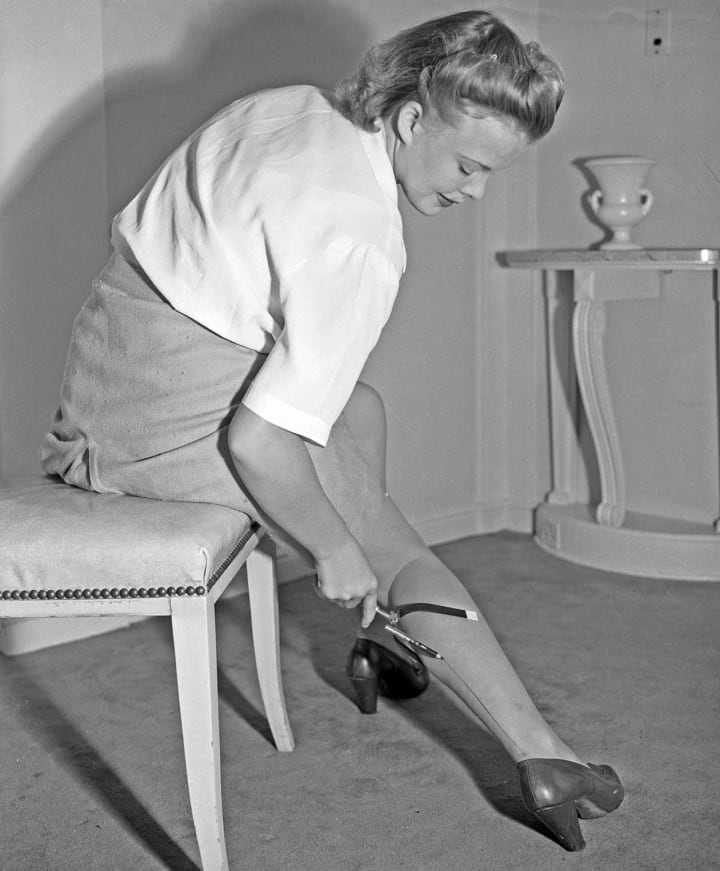
Even the crime world was affected by the void caused by removing Nylon from the market. One home in Louisiana was robbed of 18 pairs, while on the opposite end of the spectrum, robbery was ruled out as a murder motive in Chicago because the Nylon stockings were untouched.
Reflective of the desperate and even criminal mood over Nylon being rationed, Fats Waller wrote an entire song about the stocking shortage. The song was featured in the Broadway musical, Ain’t Misbehavin and describes the anxiety over being robbed for a pair of stockings:
“I'll be happy when the nylons bloom again
Cotton is monotonous to men
Only way to keep affection fresh
Get some mesh for your flesh
I'll be happy when the nylons bloom again
Ain't no need to blow no sirens then”
When WWII rationing ended and Nylon was permitted to be used publicly again, stocking manufacturing picked back up in the United States. Departments stores began stocking the coveted hosiery item again, and a massive promotional campaign was launched across the country. DuPont made the announcement by filling newspapers with the headline “Peace, It’s Here! Nylons on Sale!”. They claimed the stockings would be widely available by September of 1945 and was met with the motto “Nylons by Christmas”, which was sung by women everywhere. Planning on being capable of producing 360 million pairs per year upon the time of their announcement, DuPont did not account for just how much material shortages would continue to affect the world after the war, and ultimately, they underperformed on a massive level. Department stores, though stocked, they were not stocked with nearly enough product to meet the demand. Lines of tens of thousands of women formed outside stores who were only capable of fulfilling a fraction of the consumers needs.
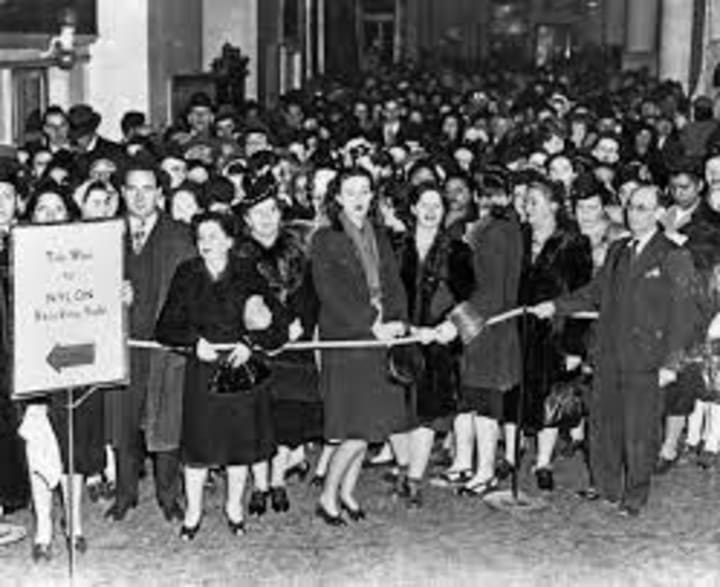
In September of 1945, as promised, the first shipment of post-war Nylon stockings made their way to major cities throughout the United States. A mere 13,000 pairs were provided to satisfy tens of thousands of women across the country.
The first riot happened in Pittsburgh. 40,0000 women piled up for blocks outside of a department store. Excitement over the reproduction of the coveted item, high anxiety over obtaining the limited product, combined with a massive crowd caused a mob mentality of desperation and animal instincts. Women began fighting in line, pushing, shoving, pulling hair, and hitting each other in attempt to beat each other to a pair of Nylons. They screamed profanities at the men who mocked them and egged them on. When police intervened, the women turned onto the officers. The scene was repeated in New York with a group of 30,000 women. These riots spread throughout the country and lasted months. Finally, in March of 1946, DuPont ramped up their production and caught up to the demand, providing 30 million pairs of stockings a month, putting an end to the riotous behavior of their desperate consumers.
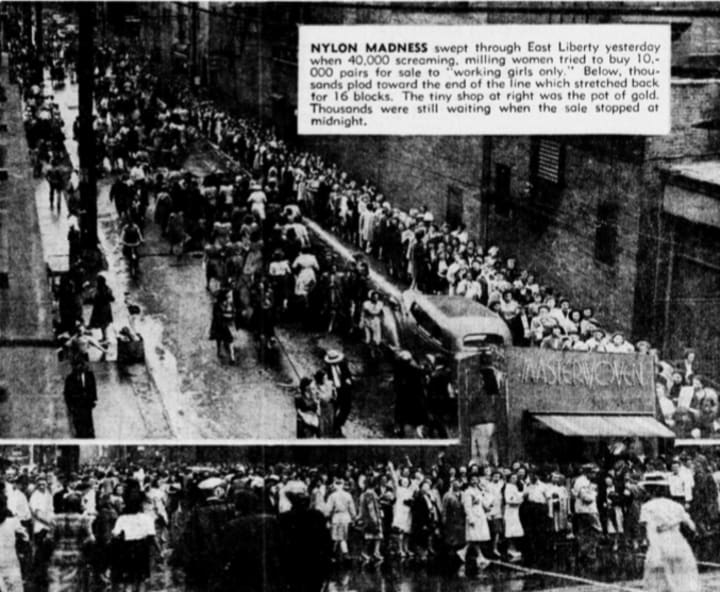
Rather than taking responsibility for their actions, the public turned on DuPont, claiming that the company purposefully slowed production down. Newspaper reporters accused the company of unpatriotic greed because of their monopoly on the patent and production of the product. DuPont responded by blaming “selfish housewives” and their hoarding, adding to the overall stocking shortage. This was not received well at all, and DuPont was slapped with threats of an antitrust lawsuit. To avoid the whole lawsuit and trial process, DuPont caved and agreed to share Nylon licensing, starting with Chemstrand Corporation, followed by many more over the years.
...
Today, Nylon is widely used across the board. Its reputation for strength and elasticity remains and it is used in seatbelts, rope, parachutes, upholstery, and clothing. While Nylon stockings may not be the staple item they were throughout the second half of the 20th Century, the vintage look and honestly, the sex appeal that comes with a pair of stockings remains iconic.
About the Creator
Chelsea Adler
Obsessed with fashion. Obsessed with dark history. Even more obsessed with escapism through a good story whether it's reading or writing one. Spice is a plus. This page is a combination of all of that. Enjoy 🖤






Comments
There are no comments for this story
Be the first to respond and start the conversation.